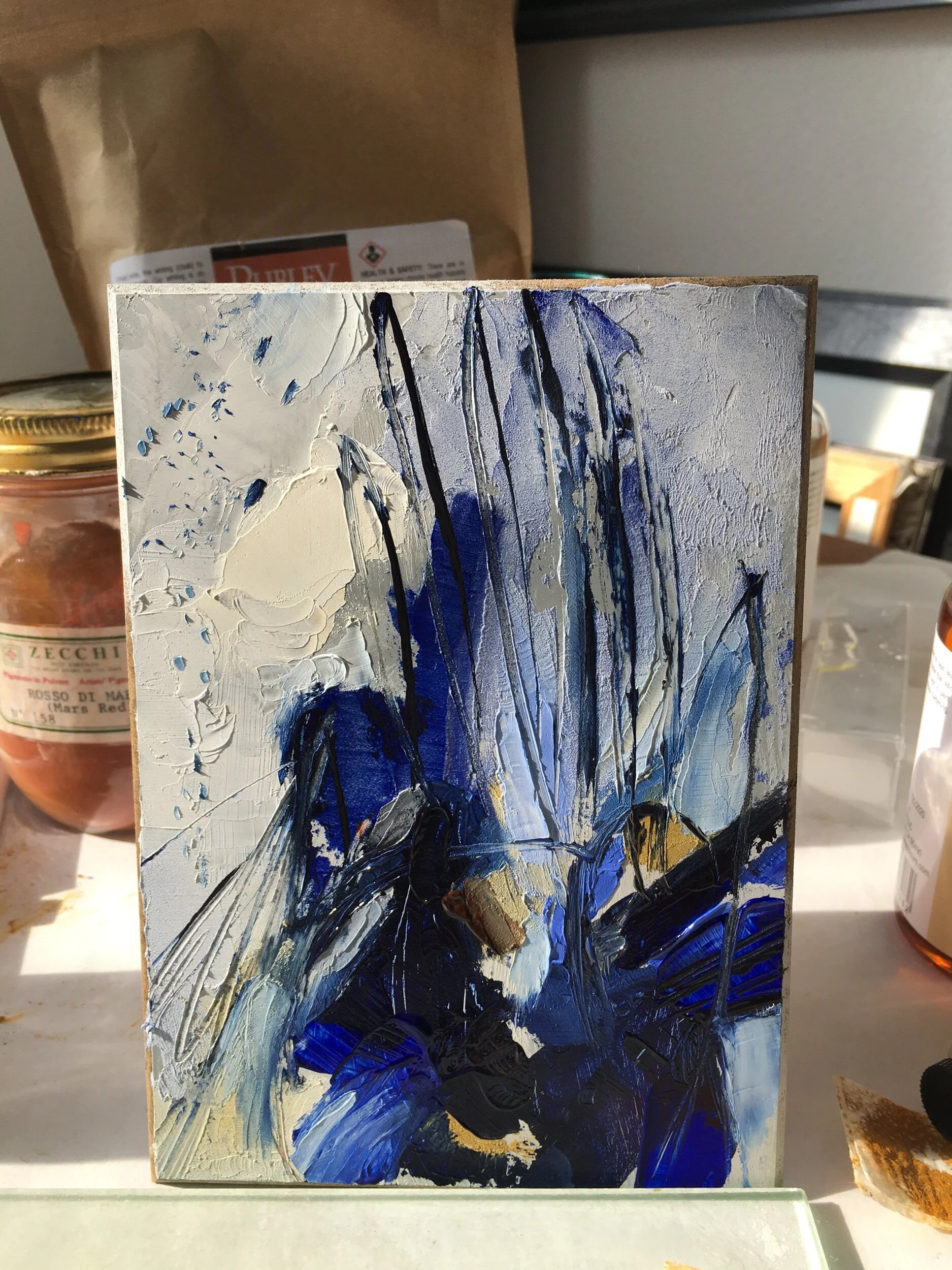Renaissance pigment, modern paint
This is one of the early results of a deep dive study I’ve been immersed in through the Painting Best Practices class. This week, I’ve been learning about paint making techniques and how the Old Masters would grind their paints right before a painting session.
The knowledge of how to make one’s own oil paint opens new possibilities for painting. For example, this work employs Royal Smalt, a cobalt colored glass pigment that is not usually sold as a color in paint tubes. Smalt was once a substitute for the more-expensive-than-gold pigment, Ultramarine, which was ground from Lapis Lazuli. Without additives, Smalt does not keep well when tubed in oil. I learned that it is best made fresh on the palette, which is what I did here.
The particle size of Smalt is unusual for modern paints and this is one of its interesting working properties. Smalt is made when molten glass is rapidly cooled and then the glass shatters. This work uses the shattered Smalt, which once was a substitute for Ultramarine, but is now a rare and interesting pigment in its own right.
Modern ultramarine is inexpensive, affordable, and widely available since it can be manufactured synthetically. The particles are small and uniform which varies widely from the working properties of Smalt. This piece employs both Smalt and synthetic Ultramarine.
My latest foray into handmade paint has helped me to think of paints, oils and pigments in an entirely different way. It’s hard to describe the difference it has made in my approach— it almost feels like using a totally different medium. The knowledge of oils and the ability to select and incorporate them into specific pigments for exact reasons is a new and exciting influence in my work.
Looking forward to sharing new epiphanies!
